Threats of potential extreme geohazards against humanity became partial reality this month, following the spectacular eruption of the Calbuco volcano in southern Chile (photo above); and the 7.8 magnitude earthquake in northern Nepal. The Nepal earthquake, occurring in one of the poorest countries in the world, has so far killed more than 7,400 people, made thousands homeless; and caused deadly avalanches on nearby Mt. Everest. Entire rural villages were destroyed.
These natural geohazards have also occurred in the Mediterranean Sea region, especially in Turkey which is constructing a large nuclear power plant at Akkuyu. Historically, severe earthquakes and volcanic eruptions have also occurred in what is now modern day Israel and Lebanon.
True, the eastern Mediterranean is not the Himalayas or the Pacific “Ring of fire” that contains many dormant and active volcanoes, as well as being prone to frequent earthquakes. The area that emcompasses Greece, Cyprus, Turkey, Syria, Lebanon, Israel and Jordan does have a history of earthquakes as well as volcanic activity.
Turkey has frequent earthquakes, some of them being quite severe. One of the worst ones in recent times was the 7.4 magnitude earthquake (photo below) which devastated the Turkish resort city of Izmit in August, 1999. The quake struck at 3 a.m. while most people were asleep. More than 17,000 people died in this earthquake; many of them due to shoddy construction standards of apartment buildings. More than 500,000 were left homeless.
Since then, other earthquakes have occurred in Turkey, whose western and eastern borders straddle two major subterranean fault lines: the North Anatolian Fault, which runs across the entire northern part of Turkey; and the East Anatolian Fault, which runs along the country’s eastern borders with both Iraq and Syria.
Another major fault line, the Dead Sea Transform, is an extension of the Syrian-African Rift. This fault line stretches 4830 km (3,000 miles) from northern Syria to Mozambique. Although no catastrophic earthquakes have occurred in the section shared by Syria, Lebanon, Israel and Jordan in recent times, historic catastrophic earthquakes have occurred.
Numerous smaller quakes measuring up to 4.5 on the Richter scale have occured in recent times; especially in the Eilat-Aqaba area. The Mediterranean Sea off the costlines of Syria, Lebanon and Israel also has earthquakes occurring. A quake measuring 4.2 in magnitude occurred in August, 2011 off Israel’s western shores.
Ron Avni, professor of geology and an earthquake specialist at Ben Gurion University, said then that this earthquake, the strongest one occurring in this area in recent years, could be a warning of a much stronger quake occurring in the future. “It’s not a question of if, but simply a question of when,” he added.
Sicily’s Mt. Etna is presently the region’s most active volcano. History has recorded some very serious volcanic eruptions, including the massive eruption ot Mt. Vesuvius, near Naples in 79 BCE. It completely destroyed the Roman cities of Hurculaneum and Pompeii. Mt Vesuvius has not erupted since 1944; and although considered largly dormant, is still regarded as one of the world’s most dangerous volcanoes.
A dormant mega-volcano, one whose mostly submerged cone comprises the Greek Island group of Santorini is located 300 km S.E.of Athens. This very historical volcano, last erupting in 1950, has had several severe eruptions during its long history. Its most deadly eruption in recorded history occurred in 1,613 BCE, destroying most of Santorini Island. This event may have helped alter the entire region from a historical standpoint (the lost city of Atlantis may have been destroyed by this eruption).
Presently, reports of volcanic magma again building up in waters under Santorini’s volcano crater or caldera, could be an indication that this super volcano may once again erupt explosively. This type of eruption could result in not only the release of huge amounts of volcanic rock and ash into the atmosphere, but could also cause severe earth tremors and possibly deadly tsunamis.
“Dormant volcanoes like Santorini can become active very quickly; within a time span of only a few decades,” says Tim Druitt, a volcanologist at the University of Blaise Pascal in France.
If Santorni does blow its submerged top, everyone in the eastern Mediterrnean basin, as well possibly on the entire planet, will be affected by its might.
More articles on earthquakes and volcanoes; and the energy created by them:
Ormat to provide 330 megawatts of geothermal energy in Sumatra Indonesia
Plans for Turkey’s first nuclear power plant revealed
Dr. Helen Caldicutt: Fukushima meltdown much worse than Chernobyl.
Photo of 2015 Nepal Earthquake: Wikipedia.org
Photo of Calbuco Volcano Eruption at Sunset: IB Times

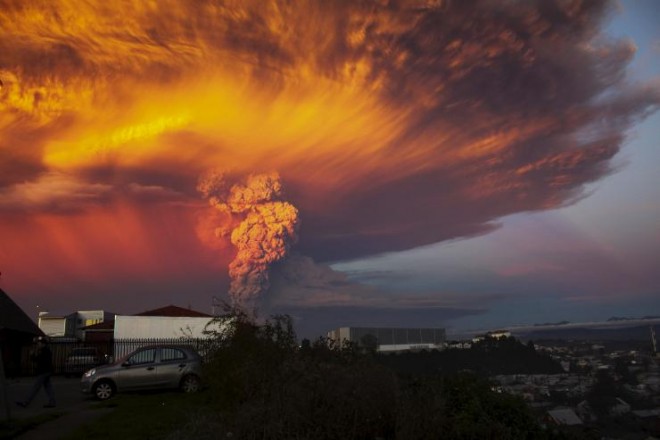
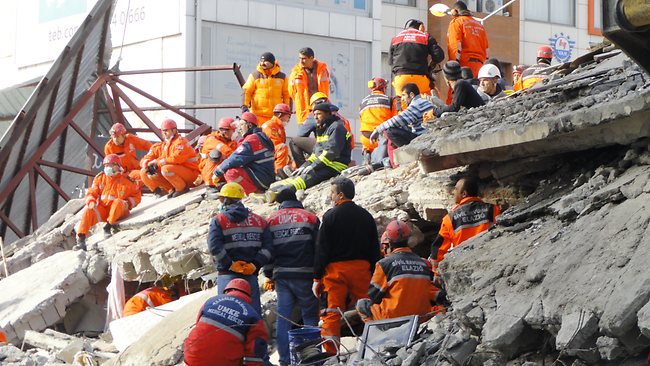
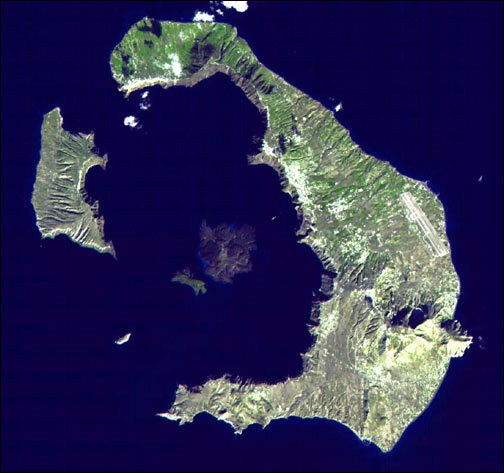

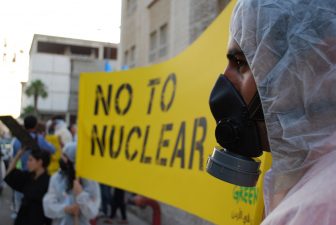

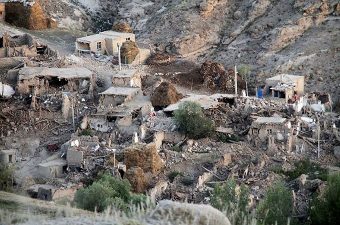
If you are wondering how to share this article on Facebook w/o the Medicaid ad showing, simply replace that image with another photo (like one of those in the article).
Try it. It works.